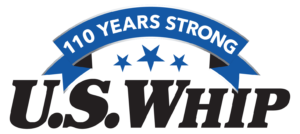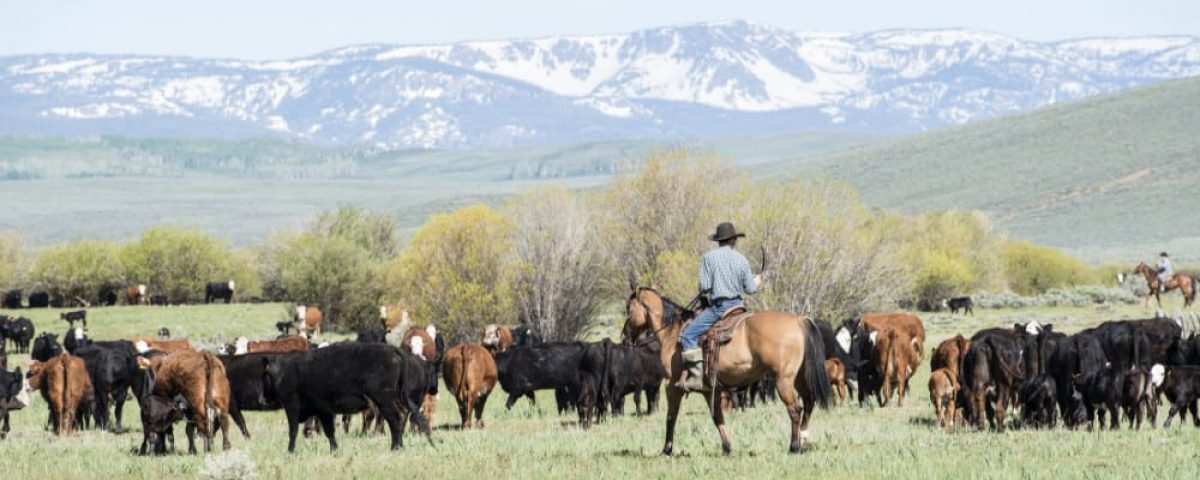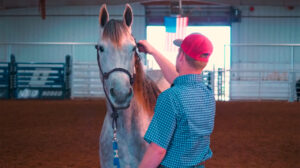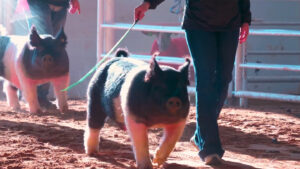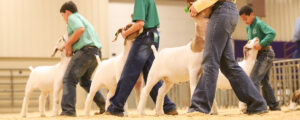Moving and gathering cattle from the pasture are essential tasks for ranchers to accomplish, in order to move the herd from one pasture to another or into holding pens for husbandry purposes. Depending on the techniques used, this task can either be a smooth process or a frustrating mess. In an effort to help it be a smooth process, let’s discuss 4 tips for moving and gathering cattle from the pasture.
1. Finding the Herd:
Initially, the cattle must be located when grazing in large pastures. Ranchers will already have an idea of where the herd is located depending on the time of the year, yet locating them may take some time if the area is large and has rough terrain. Using horses, handlers can traverse the rough terrain and eventually locate the cattle.
Tracking techniques, listening for the sounds of the cattle, locating strays, and predicting their location by knowing where the best grass is, are all methods used to find the herd. Ranchers can also use drones or cattle dogs to help them locate cattle in large pastures; just make sure the dogs are well-trained to move slowly and can follow the handler’s instructions to stay outside of the flight zone.
2. Move Slowly and Calmly:
Moving cattle from one place to another requires moving slowly and calmly. This is the fastest way to gather and move cattle. Whether on foot or horse, handlers should avoid fast movements and making loud noises, as these will initiate a flight response with the cattle.
An article highlighting cattle handling expert Bud Williams’ methods explains:
“The Bud Williams methods of calm, slow movement of cattle on pastures can be defined as a stimulus-response relationship.”
Basically, using the natural instincts of cattle, the handler acts as the predator (stimulus) in order to gather and move the cattle in the right direction (response). This works best with cattle that have never been herded or are not as tame.
When cattle are being stalked by a handler, they’ll naturally begin to bunch up. After they’re loosely bunched up, handlers can apply pressure from the rear to initiate movement. If there’s more than one handler, one can lead from the front, while the others form in the rear. The main idea is for handlers to move slowly and calmly, so the cattle won’t feel threatened and begin to run away from the gathered herd.
The main objective for handlers to accomplish, according to an article on Drovers called: “Four Ways To Gather Cattle In A Pasture And Start Good Movement”, written by Whit Hibbard and Dawn Hnatow on May 14th, 2018, is:
“Regardless of the method used, the objective is to create what’s known as ‘good movement.’ Good movement is when animals are contentedly trailing out at their own pace and their minds are going forward.”
3. Zig Zagging Behind the Herd:
Creating good movement in a large field with untamed cattle will, likely, require a handler to position themselves in the rear of the gathered herd. While in the rear they should move in a zig zag pattern, back and forth, behind the herd. This is explained more in the first article mentioned:
“The arc of the zig zag movement must not exceed a quarter circle.
…The handler should keep continuously moving back and forth. If you stop moving or linger too long in one animals’ blind spot it may turn back and look at you. On open pastures, it is important to take your time.”
These variables will determine how the herd should be handled and how wide the zig zag motion should be:
-
- Size of the herd
- Size of the pasture
- Tameness of the cattle (have they been herded before?)
- Number of handlers
- Terrain traversing
In large pastures with many cattle, one handler can position themselves in the rear of the herd using this zig zag motion to naturally gather the herd together. The handler in front of the herd can then lead them, while the rear handler continues going back and forth while applying pressure when and where needed.
4. Horses Handle Herding Better:
The main choices ranchers have to move and gather cattle from the pasture are:
-
- Horses
- ATVs
- Walking
While walking may work for moving cattle from small pastures and holding pens, large pastures require either herding cattle with horses or ATVs.
An article found on Beef Magazine called: “Why I Prefer Moving Cattle With A Horse Rather Than An ATV”, written on July 30th, by Troy Marshall, explains why horses are the better choice:
“Four-wheelers have their place, and I use them all the time, but moving cows on one is like digging a ditch with a spoon. It can be done, but it isn’t a good use of one’s time.
…my 4-wheeler was like an axe, and the horse was more of a scalpel.”
For most situations, horses work best for gathering and moving cattle. ATVs are too loud, they require gas to be brought for longer jobs, they don’t traverse the terrain as well as horses, and they don’t offer the fluidity of movement that horses do.
(Get a free horse tools and training guide from U.S.Whip here)
Summary
Gathering and moving cattle from the pasture are important tasks for ranchers to accomplish for husbandry processes, calf weaning, and shipment to market. Using these 4 tips will help ranchers make this integral task a smoother process. With the right techniques and understanding handlers can initiate good movement with cattle herds, thus creating a beneficial low-stress environment.
While ranchers prepare for gathering and moving their cattle from the pasture, they’ll need to equip themselves with the right tools for the task. U.S. Whip’s quality products have been the choice for ranchers for over a 100 years; from our vast selection of American made products, ranchers will find the equipment needed for this important task.
